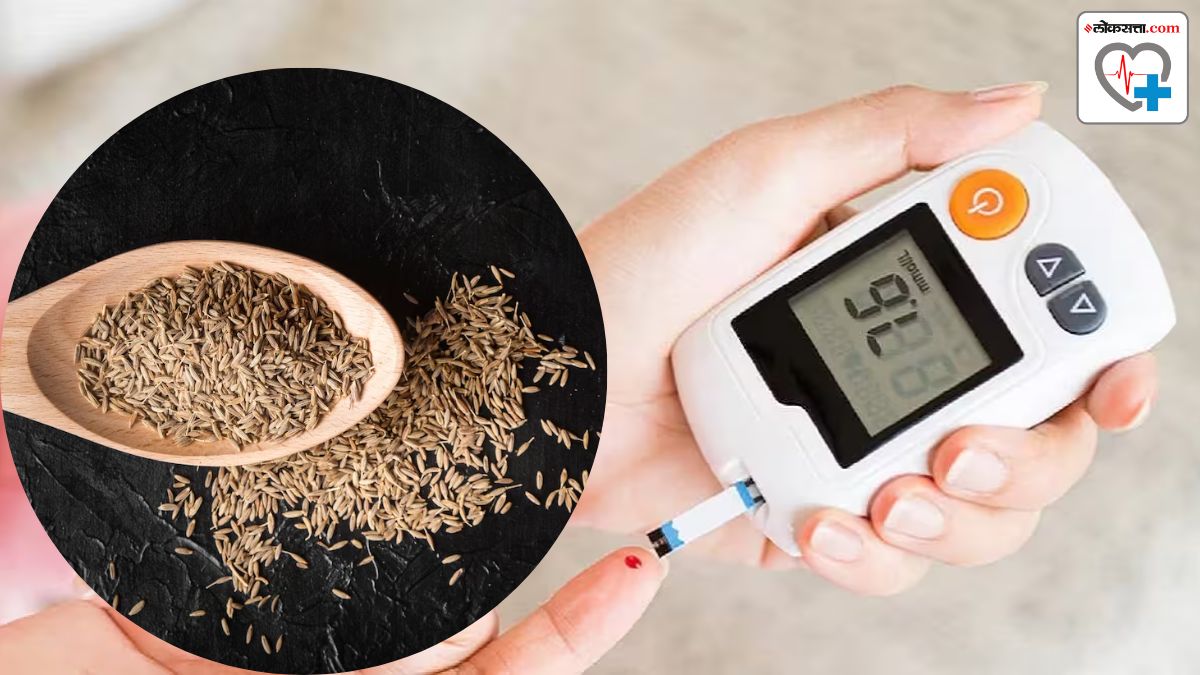The Ancient Whisper: Cumin’s Journey from Spice Rack to Scientific Spotlight in Blood Sugar Balance
The story of human health is a perpetual dance between our bodies, our environment, and the wisdom we accumulate over generations. In this intricate ballet, certain elements emerge from the background to take center stage, often rediscovered and reinterpreted through the lens of modern science. Among these, the humble spice, cumin, steeped in history and flavor, is now whispering a compelling narrative about its potential role in managing one of humanity’s most pervasive health challenges: blood sugar imbalance and diabetes.
This isn’t merely a tale of a spice; it’s a saga of ancient empirical observation meeting rigorous scientific inquiry, a journey from the sun-drenched kitchens of the Middle East and India to the sterile laboratories of today. It’s a narrative that intertwines the global health crisis of diabetes with the intricate biochemical symphony within our bodies, all while exploring the promise held within the unassuming seeds of Cuminum cyminum.
The Unfolding Crisis: A World Grappling with Diabetes
Before we delve into cumin’s potential, we must first understand the landscape it seeks to influence. Diabetes mellitus, a chronic metabolic disorder characterized by elevated blood glucose levels, has reached epidemic proportions globally. The International Diabetes Federation estimates that over half a billion people worldwide are living with diabetes, a number projected to rise dramatically in the coming decades. This isn’t just a statistic; it represents millions of individual stories of struggle, adaptation, and the constant vigilance required to navigate a life with compromised metabolic function.
Type 2 diabetes, accounting for the vast majority of cases, is largely driven by a combination of genetic predisposition and lifestyle factors, including sedentary habits, poor dietary choices, and obesity. Its insidious progression often begins with insulin resistance, a state where the body’s cells become less responsive to insulin, the hormone responsible for ferrying glucose from the bloodstream into cells for energy. To compensate, the pancreas overproduces insulin, but eventually, its beta cells become exhausted, leading to insufficient insulin production and persistently high blood sugar.
The consequences of uncontrolled diabetes are profound and far-reaching. It silently erodes the body’s systems, leading to debilitating macrovascular complications like heart disease, stroke, and peripheral artery disease, as well as devastating microvascular complications such as retinopathy (eye damage leading to blindness), nephropathy (kidney disease leading to failure), and neuropathy (nerve damage causing pain, numbness, and poor wound healing). The economic burden is staggering, but the human cost – the loss of quality of life, independence, and even life itself – is immeasurable.
Current management strategies revolve around a multi-pronged approach: dietary modifications, regular physical activity, and pharmacological interventions ranging from oral medications that enhance insulin sensitivity or secretion to injectable insulin therapy. While these approaches are vital and often life-saving, there’s a growing recognition of the need for complementary strategies, particularly those rooted in nature, that can support metabolic health, mitigate side effects, and potentially offer a more holistic path to wellness. It is into this critical space that cumin steps, not as a miracle cure, but as a compelling partner in the complex journey of diabetes management.
The Symphony of Blood Sugar: A Brief Overture
To truly appreciate cumin’s potential, a brief understanding of the intricate dance of blood sugar is essential. Every meal we consume is broken down into its constituent parts, with carbohydrates being the primary source of glucose. This glucose enters the bloodstream, signaling the pancreas to release insulin. Insulin acts as a key, unlocking the doors of our cells – muscle, fat, and liver cells – allowing glucose to enter and be utilized for energy or stored for later.
In a healthy individual, this system operates with remarkable precision, maintaining blood glucose within a narrow, optimal range. However, in the context of insulin resistance, those cellular doors become sticky, requiring more insulin to achieve the same effect. If the pancreas cannot keep up, glucose accumulates in the blood, leading to hyperglycemia. Over time, this chronic elevation is what causes the damage characteristic of diabetes.
Factors influencing this delicate balance include:
- Dietary choices: The type and quantity of carbohydrates, fats, and proteins consumed.
- Physical activity: Exercise enhances glucose uptake by muscles, reducing blood sugar.
- Hormonal balance: Other hormones like glucagon, cortisol, and growth hormone also play roles.
- Inflammation and oxidative stress: These cellular stressors can impair insulin signaling and damage pancreatic beta cells.
- Gut microbiome: The trillions of bacteria in our gut profoundly influence nutrient absorption, metabolism, and even insulin sensitivity.
Understanding these multifaceted influences allows us to appreciate that effective diabetes management requires a comprehensive approach, and it is within this complexity that cumin’s diverse mechanisms of action find their potential resonance.
Cumin: A Spice with a Storied Past and a Promising Future
Cumin (Cuminum cyminum) is not a newcomer to the human narrative. Its seeds, small and elongated with distinctive ridges, have been treasured for millennia. Originating in the Middle East, it quickly spread throughout Asia, Africa, and Europe, becoming an indispensable ingredient in diverse cuisines, from the robust curries of India to the aromatic stews of North Africa and the savory dishes of Mexico.
But cumin’s role extended far beyond the culinary. Ancient civilizations recognized its medicinal properties. In traditional Ayurvedic medicine, it’s revered for its digestive aid, carminative (gas-relieving), and anti-inflammatory qualities. The Unani system of medicine in the Middle East also utilized it for digestive issues, pain relief, and even as a diuretic. Its presence in traditional pharmacopeias across cultures suggests an inherent recognition of its therapeutic value, albeit without the modern scientific understanding of its mechanisms.
What gives cumin this remarkable versatility? The answer lies in its rich phytochemical profile. The distinctive aroma and flavor come from its essential oil, which is dominated by potent compounds like cuminaldehyde, cymene, and beta-pinene. Beyond these, cumin seeds are a treasure trove of flavonoids, phenols, terpenes, and various antioxidants and minerals. It is this complex synergy of bioactive molecules that scientists believe underpins its potential health benefits, particularly concerning metabolic health.
Unpacking the Mechanisms: How Cumin Might Influence Blood Sugar
The "story" of cumin and blood sugar truly deepens when we explore the proposed molecular pathways through which it exerts its effects. Modern research, employing sophisticated techniques, is beginning to unravel the intricate ways these ancient seeds might interact with our physiology.
-
Enhancing Insulin Sensitivity:
One of the most critical aspects of Type 2 diabetes is insulin resistance. Studies suggest that certain compounds in cumin, particularly cuminaldehyde, may help improve the sensitivity of cells to insulin. This means that cells, especially muscle and fat cells, become more responsive to insulin’s signal, allowing glucose to enter them more efficiently from the bloodstream. By making existing insulin more effective, cumin could help reduce the burden on the pancreas and lower circulating blood glucose levels. This is akin to making the "keys" (insulin) fit the "locks" (cellular receptors) better. -
Modulating Glucose Absorption:
A direct way to manage post-meal blood sugar spikes is to slow down the absorption of glucose from the digestive tract. Some compounds in cumin have been shown to inhibit digestive enzymes such as alpha-glucosidase and alpha-amylase. These enzymes are responsible for breaking down complex carbohydrates into simpler sugars that can be absorbed into the bloodstream. By partially inhibiting these enzymes, cumin can slow down the rate at which glucose enters the circulation, leading to a more gradual and sustained rise in blood sugar rather than a sharp spike. This mechanism is similar to how some pharmaceutical drugs for diabetes, like acarbose, work. -
Antioxidant Powerhouse:
Oxidative stress, an imbalance between the production of free radicals and the body’s ability to counteract their harmful effects, plays a significant role in the development and progression of diabetes complications. It can damage pancreatic beta cells, impair insulin signaling, and contribute to inflammation. Cumin is rich in antioxidants like flavonoids, phenols, and various terpenes, which can neutralize free radicals and mitigate oxidative damage. By reducing oxidative stress, cumin may help protect beta-cell function and improve overall metabolic health. -
Anti-inflammatory Effects:
Chronic low-grade inflammation is increasingly recognized as a key driver of insulin resistance and a contributor to diabetes complications. Compounds in cumin have demonstrated anti-inflammatory properties, potentially by modulating inflammatory pathways and reducing the production of pro-inflammatory cytokines. By calming the inflammatory environment, cumin could help improve cellular responsiveness to insulin and reduce the systemic stress associated with diabetes. -
Improving Lipid Profile:
Dyslipidemia, characterized by abnormal levels of cholesterol and triglycerides, frequently co-occurs with diabetes and significantly increases the risk of cardiovascular disease. Several studies have indicated that cumin consumption may lead to favorable changes in lipid profiles, including reductions in total cholesterol, LDL ("bad") cholesterol, and triglycerides, while potentially increasing HDL ("good") cholesterol. These effects, while not directly impacting blood sugar, are crucial for mitigating the broader health risks associated with diabetes. -
Weight Management Support:
Obesity is a major risk factor for Type 2 diabetes, and even modest weight loss can significantly improve blood sugar control. While not a magic bullet for weight loss, some research suggests cumin may play a supportive role. Its potential to improve metabolism, reduce inflammation, and enhance satiety could indirectly contribute to healthier weight management, thereby aiding in diabetes prevention and control. -
Modulating the Gut Microbiome:
The burgeoning field of gut microbiome research reveals its profound influence on metabolic health. The composition and activity of the trillions of microbes in our intestines impact everything from nutrient extraction to inflammation and insulin sensitivity. Emerging evidence suggests that certain plant compounds, including those found in spices like cumin, can positively modulate the gut microbiome, promoting the growth of beneficial bacteria and suppressing pathogenic ones. A healthier gut microbiome could, in turn, contribute to improved glucose metabolism and reduced insulin resistance.
The Scientific Evidence: From Lab Bench to Clinical Trials
The journey from ancient wisdom to scientific validation is often long and arduous, marked by incremental discoveries. For cumin, the evidence is steadily accumulating, painting an increasingly compelling picture.
Early in vitro (cell culture) and in vivo (animal model) studies laid the groundwork, demonstrating cumin extracts’ ability to lower blood glucose, improve insulin sensitivity, reduce oxidative stress, and enhance lipid profiles in diabetic rats and mice. These foundational studies provided the mechanistic clues, pointing researchers towards the specific pathways involved.
However, the real test comes with human clinical trials. While still relatively few in number and often with smaller sample sizes, the results have been encouraging.
-
One notable randomized, double-blind, placebo-controlled trial investigated the effects of cumin powder on blood sugar and lipid levels in overweight and obese women. The study found that women who consumed 3 grams of cumin powder daily for eight weeks experienced significant reductions in fasting blood glucose, HbA1c (a long-term marker of blood sugar control), insulin levels, and insulin resistance, compared to the placebo group. They also saw improvements in their lipid profiles.
-
Another study involving patients with Type 2 diabetes explored the effects of cumin essential oil capsules. Participants who received the capsules showed significant decreases in fasting blood glucose, HbA1c, and inflammatory markers, alongside improvements in antioxidant capacity.
-
Further research has investigated the effects of cumin in combination with other herbal extracts, demonstrating synergistic benefits in metabolic parameters. While these studies provide valuable insights, it’s crucial to acknowledge their limitations: sample sizes are often small, study durations are relatively short, and the exact standardization of cumin preparations can vary. More extensive, long-term, multi-center trials are needed to unequivocally establish optimal dosages, long-term safety, and efficacy across diverse populations.
Despite these caveats, the consistent pattern of positive findings across different studies – from basic science to human trials – suggests that cumin’s potential in diabetes management is a story worth pursuing with further rigor.
Weaving Cumin into the Tapestry of Diabetes Management
For individuals looking to explore cumin’s potential, integration into a diabetes-friendly lifestyle can be both practical and enjoyable. This isn’t about replacing prescribed medications or ignoring medical advice; rather, it’s about harnessing a natural ally as part of a holistic approach.
Culinary Integration:
The easiest and most traditional way to incorporate cumin is through cooking.
- Whole seeds: Can be tempered in hot oil at the beginning of cooking to release their aroma, added to curries, stews, soups, and vegetable dishes. They also lend a delightful crunch and flavor to roasted vegetables.
- Ground cumin: A versatile spice for rubs, marinades, chili, tacos, lentil dishes, and even baked goods. Its earthy, warm notes can elevate a wide array of savory dishes.
- Cumin tea: A simple infusion made by steeping a teaspoon of whole or ground cumin in hot water can be a soothing and potentially beneficial beverage.
- Cumin water: Soaking cumin seeds overnight and drinking the water in the morning is a traditional remedy believed to aid digestion and metabolism.
Supplementation:
Cumin extracts or essential oil capsules are also available. However, it is paramount to exercise caution with supplements.
- Consult a healthcare professional: Before starting any new supplement, especially if you have diabetes or are on medication, consult your doctor or a registered dietitian. Cumin, particularly in concentrated forms, may interact with certain medications, such as blood thinners or diabetes drugs, potentially enhancing their effects and leading to hypoglycemia (low blood sugar).
- Quality matters: Choose reputable brands that provide third-party testing for purity and potency.
- Dosage: Stick to recommended dosages and avoid excessive consumption. The therapeutic dosage found in studies (e.g., 3 grams of powder daily) is higher than what you might typically consume in a single meal.
The Holistic Framework:
It’s crucial to remember that cumin is not a standalone solution. Its potential benefits are best realized within the context of a broader lifestyle commitment:
- Balanced Diet: Emphasizing whole, unprocessed foods, plenty of fiber, lean proteins, and healthy fats, while limiting refined carbohydrates and sugars.
- Regular Physical Activity: Aim for a combination of aerobic and strength training exercises.
- Stress Management: Chronic stress can elevate blood sugar. Practices like mindfulness, meditation, and yoga are beneficial.
- Adequate Sleep: Poor sleep can impair insulin sensitivity.
- Regular Medical Check-ups: Consistent monitoring of blood sugar levels, HbA1c, and other metabolic markers is essential.
Challenges and the Unwritten Chapters
While the story of cumin and blood sugar balance is compelling, it’s far from complete. Several challenges and unwritten chapters remain:
- Standardization of Extracts: The potency of cumin can vary depending on its origin, processing, and storage. For reliable therapeutic use, standardized extracts with consistent levels of active compounds are needed.
- Long-term Safety and Efficacy: While generally considered safe as a culinary spice, the long-term effects of higher, concentrated doses of cumin extracts or essential oils need further investigation, particularly in vulnerable populations.
- Synergistic Effects: Cumin is often consumed with other spices and foods. Understanding its interactions and potential synergistic effects with other bioactive compounds could unlock even greater benefits.
- Individual Variability: Responses to natural compounds can vary significantly among individuals due to genetic factors, gut microbiome composition, and overall health status.
- Bridging the Gap: Translating promising research findings into practical, evidence-based recommendations for healthcare providers and patients requires robust, large-scale clinical trials.
The Continuing Narrative: A Blend of Hope and Prudence
The narrative of cumin’s potential in diabetes management is a vibrant tapestry woven from ancient traditions, modern scientific inquiry, and the enduring human quest for health. It tells a story of an unassuming seed, once a mere culinary delight, now emerging as a potential metabolic ally.
This story is one of hope – hope that nature continues to hold keys to complex health challenges, hope that integrative approaches can offer richer pathways to wellness, and hope that even small, consistent lifestyle choices can make a profound difference. But it is also a story of prudence, reminding us that natural remedies are not substitutes for medical care, and that careful, informed choices, guided by scientific understanding and professional advice, are always paramount.
As we continue to unravel the mysteries of our bodies and the natural world, spices like cumin serve as powerful reminders of the intricate connections that bind us to our past, inform our present, and illuminate possibilities for a healthier future. The ancient whisper of cumin, now amplified by the voice of science, invites us to listen, learn, and perhaps, to savor a path towards better blood sugar balance, one flavorful seed at a time.







